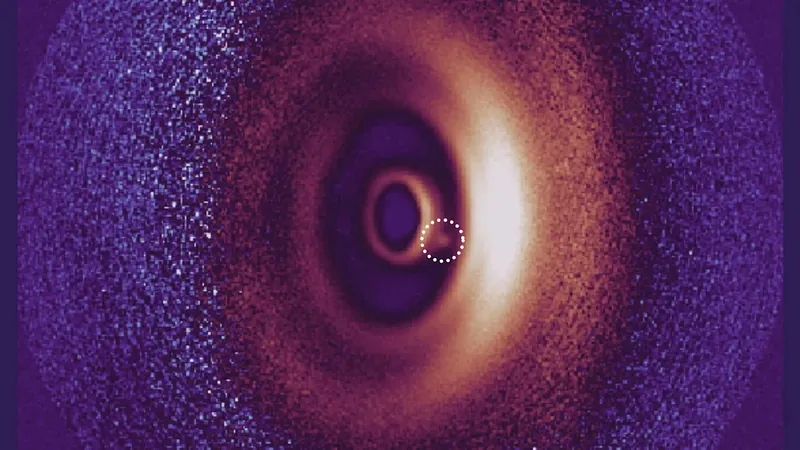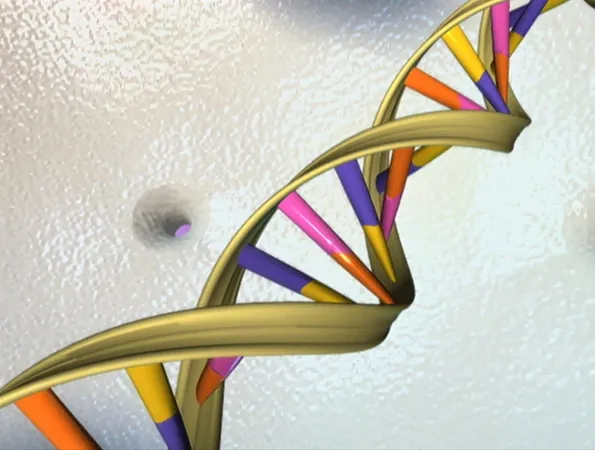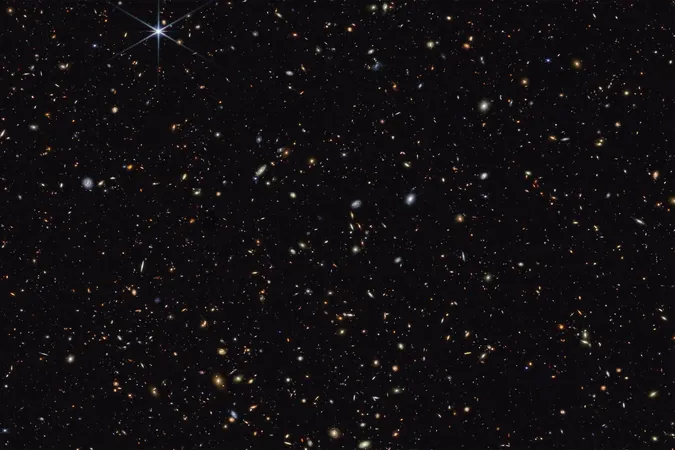
Irish Astronomers Unveil Astonishing Discovery of New Planet WISPIT 2b!
2025-08-26
Author: Emma
A Cosmic Breakthrough: Welcome WISPIT 2b!
Get ready to be amazed! Irish astronomers are buzzing over the breathtaking discovery of a new planet known as WISPIT 2b, described as a 'remarkable discovery' by the researchers involved.
Meet WISPIT 2b: A Gas Giant in the Making
Estimated to be a youthful five million years old, WISPIT 2b is believed to be a gas giant comparable in size to our very own Jupiter. This celestial marvel is located about 430 light-years away, nestled in the direction of the constellation Aquila, the eagle.
Collaboration Across Borders
This ground-breaking planet was identified by an international team, co-led by experts from the University of Galway, which highlights the power of collaboration in astronomy. The study behind this enchanting find was published in the prestigious Astrophysical Journal Letters.
A Dynamic Observation Process
Utilizing the cutting-edge European Southern Observatory's Very Large Telescope (VLT) in Chile, the team embarked on a mission using brief snapshot observations of multiple young stars. According to Dr. Christian Ginski from the University of Galway, they set out to spot potential planets around these stars but stumbled upon something even more mesmerizing: a stunning multi-ringed dust disk.
A Rare Early-Stage Discovery
WISPIT 2b becomes only the second planet confirmed to have been detected at such an early phase in its evolution around a young star akin to our Sun. The inaugural discovery in this category took place in 2018, also involving Dr. Ginski.
Shedding Light on Planet Formation
Captured in near-infrared light—a view akin to night-vision goggles—WISPIT 2b is still aglow from its initial formation phase, showcasing a spectacular clear image of the nascent planet within a gap of its surrounding disk.
A Birth Place for Future Planets
The observed dust and gas-rich disk, which stretches out a whopping 380 astronomical units, serves as a cradle for potential planetary formation. Researchers believe this intricate disk structure, adorned with rings and spirals, is indicative of the planets that may be forming within.
Praise from the Discoverers
Richelle van Capelleveen, the brilliant mind who led the research, expressed her exhilaration, stating, "Discovering this planet was an amazing experience—we were incredibly lucky!" Other team members like Chloe Lawlor emphasized the significance of WISPIT 2b for understanding current planetary formation models.
Lighting the Path Forward
With students like Jake Byrne and Dan McLachlan praising the project as a highlight of their academic careers, it’s clear this remarkable discovery is set to ignite discussions within the scientific community and push the boundaries of our understanding of how planets are born. Buckle up—WISPIT 2b is ready to take the spotlight!









 Brasil (PT)
Brasil (PT)
 Canada (EN)
Canada (EN)
 Chile (ES)
Chile (ES)
 Česko (CS)
Česko (CS)
 대한민국 (KO)
대한민국 (KO)
 España (ES)
España (ES)
 France (FR)
France (FR)
 Hong Kong (EN)
Hong Kong (EN)
 Italia (IT)
Italia (IT)
 日本 (JA)
日本 (JA)
 Magyarország (HU)
Magyarország (HU)
 Norge (NO)
Norge (NO)
 Polska (PL)
Polska (PL)
 Schweiz (DE)
Schweiz (DE)
 Singapore (EN)
Singapore (EN)
 Sverige (SV)
Sverige (SV)
 Suomi (FI)
Suomi (FI)
 Türkiye (TR)
Türkiye (TR)
 الإمارات العربية المتحدة (AR)
الإمارات العربية المتحدة (AR)